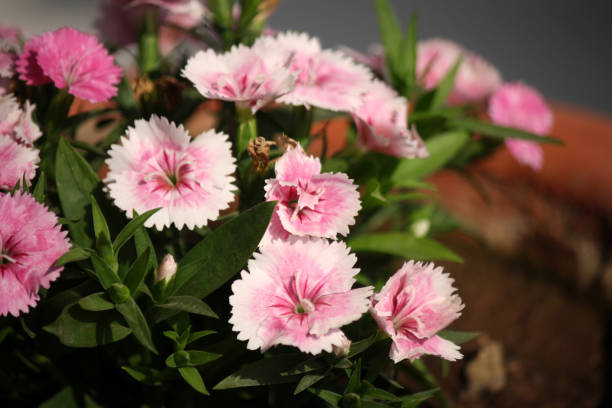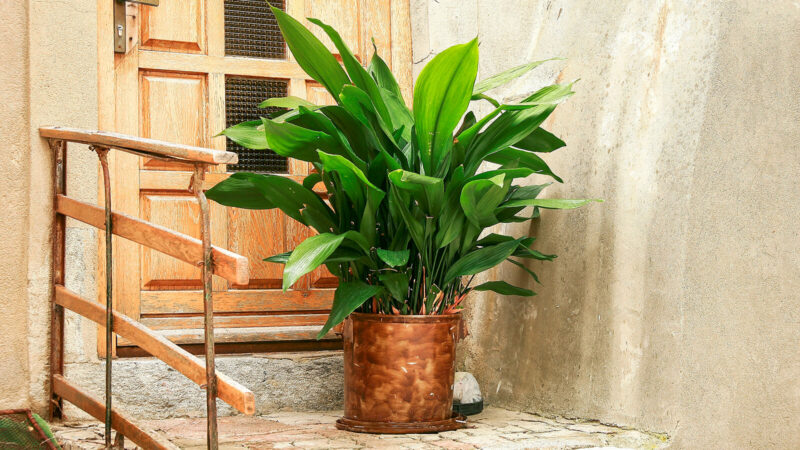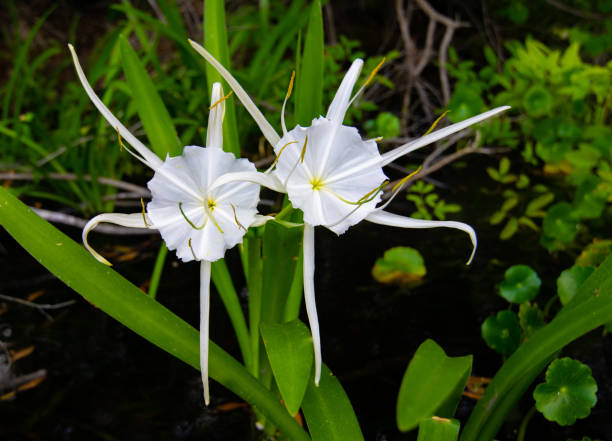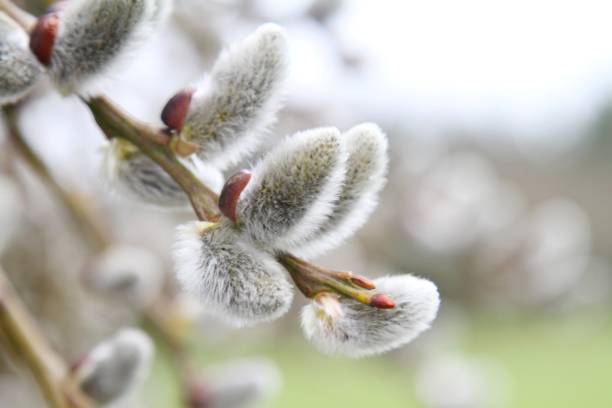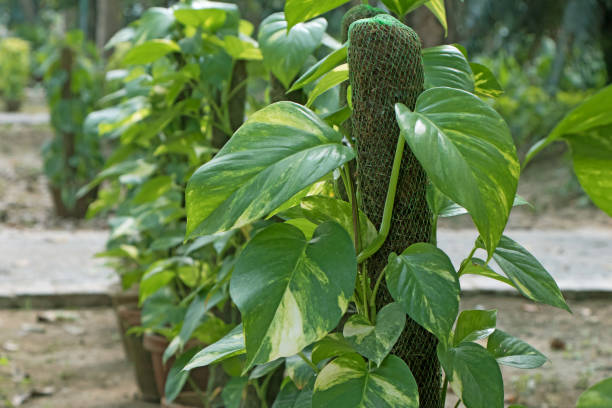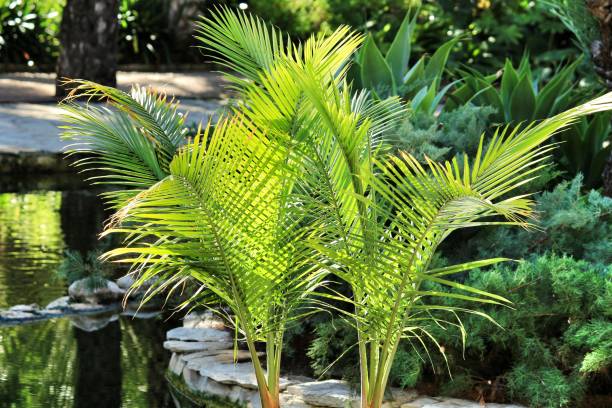Zebra Plant Care: Growing Aphelandra Squarrosa At Home
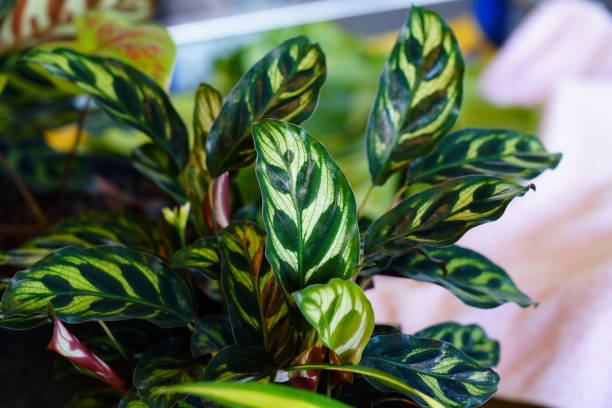
The indoor zebra plant, known for its striking dark green foliage adorned with white stripes, is highly admired. The plant’s most captivating feature is its multicoloured flowers. During late summer or early autumn, the zebra plant produces several tall golden bracts, ranging from two to four per plant, that can grow up to several inches long and remain vibrant for up to six weeks. Despite its prolonged life span, the indoor zebra plant has a sluggish growth rate and takes around three years to mature into a modest height of a few feet.
| Name | Zebra plant |
| Botanical Name | Aphelandra squarrosa |
| Belongs to | Acanthaceae |
| Type Of Plant | Annual |
| Size | 1–6 ft. tall, 1–5 ft. wide |
| Sun Exposure | Partial |
| Type Of Soil | Moist |
| pH Of Soil | Neutral, acidic |
| Time of Bloom | Summer, fall |
| Color of Flower | Yellow |
| Zones’ Hardiness | 11-12 (USDA) |
| Area | Brazil |
Zebra Plant Care
Despite its stunning appearance and origin in Brazil, the zebra plant requires special care due to its delicate nature. To properly care for this hardy plant, select a location with slightly elevated humidity levels (60-70%) and a minimum temperature of 60 degrees Fahrenheit.
Place the plant in an area with bright, filtered light but avoid direct sunlight, and ensure the soil is consistently moist. Emphasize the plant’s unique striped foliage by choosing a bold pot and watch for the yellow bract that blooms in late summer or early fall. Once the plant has bloomed and the bracts start to wither, trim it by removing the exhausted bract, along with any leaves or stems that show signs of wilting.
Light
The zebra plant flourishes in areas with indirect light or partial shade, mimicking its natural habitat beneath the canopy of trees in warm, humid climates. To avoid damaging the plant’s leaves, avoid exposing it to direct sunlight. However, complete shade can also affect the plant’s ability to bloom.
Soil
Neutral to acidic soil is the ideal growing environment for zebra plants. A multi-purpose potting blend is sufficient, but mixing sand into the soil is advisable for adequate drainage. To promote flowering, add fertilizer every one to two weeks during the plant’s growing season, which usually falls in spring and summer.
Water
Consistently moist soil is critical for zebra plant growth, but overwatering may cause leaf wilting. Water your plant every few weeks until the soil is saturated, ensuring the water penetrates completely and runs out through the container’s drainage holes. Avoid watering from above and maintain lukewarm water temperatures, mimicking the effects of a drenching rainstorm in warmer regions.
Temperature and Humidity
Moderate temperatures (at least 60 degrees Fahrenheit) are best for zebra plants, which thrive in warm, humid environments. Avoid temperature fluctuations, and keep the plant away from vents that may make it too hot or cold. Maintain a consistent humidity level between 60 to 70 per cent. Use a humidifier or mist the plant with lukewarm water if necessary.
Fertilizer
Fertilizer is crucial for zebra plant growth, especially during its flowering season. Feed the plant every one to two weeks with a fertilizer suitable for foliage and flowers. The flowering season usually occurs during spring and early summer.
The Various Types of Zebra Plant

The zebra plant comes in different varieties, some of which include:
Dania

‘Dania’ features green leaves with white veins, reddish to maroon stems, and yellow flowers.
Fritz Prinsler
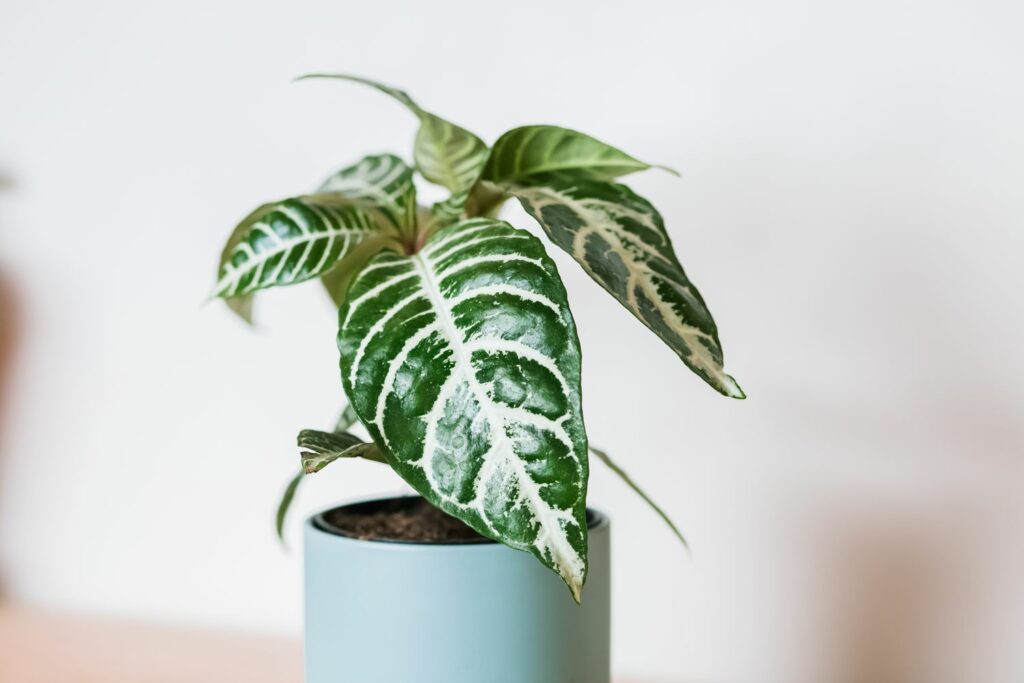
‘Fritz Prinsler’ has green leaves with slightly yellow veins and yellow-coloured flowers and bracts.
Leopoldii
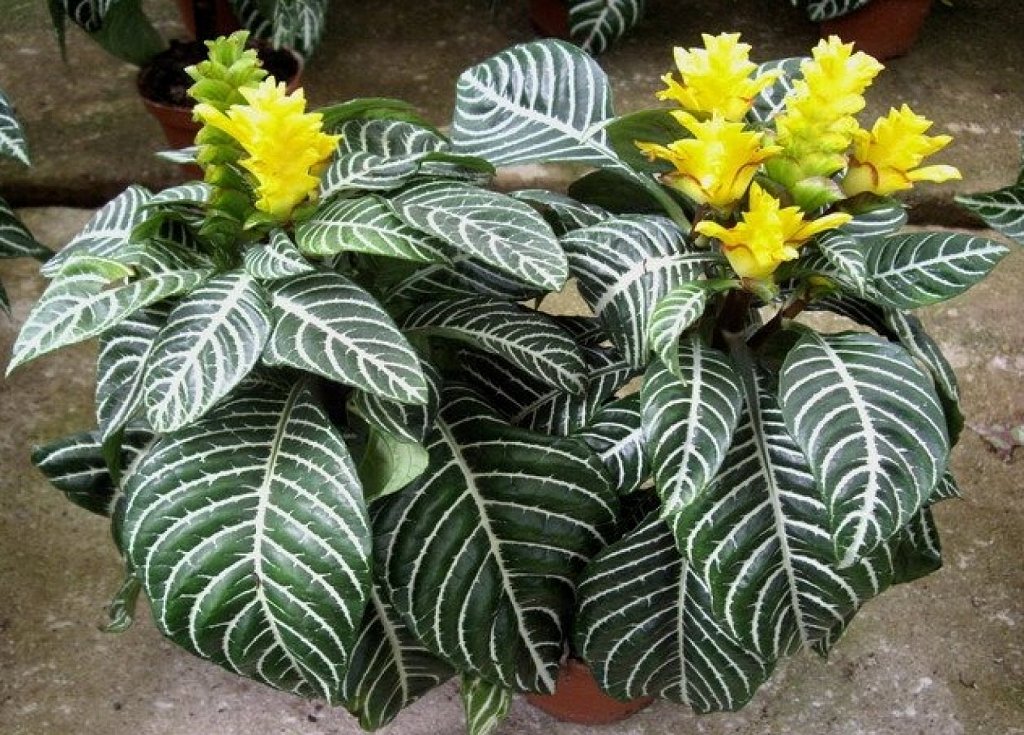
‘Leopoldii’ has wider leaves and produces golden flowers with red bracts.
Louisa

‘Louisa’ has green leaves with yellow veins and bears yellow flowers with gold bracts.
Snow White
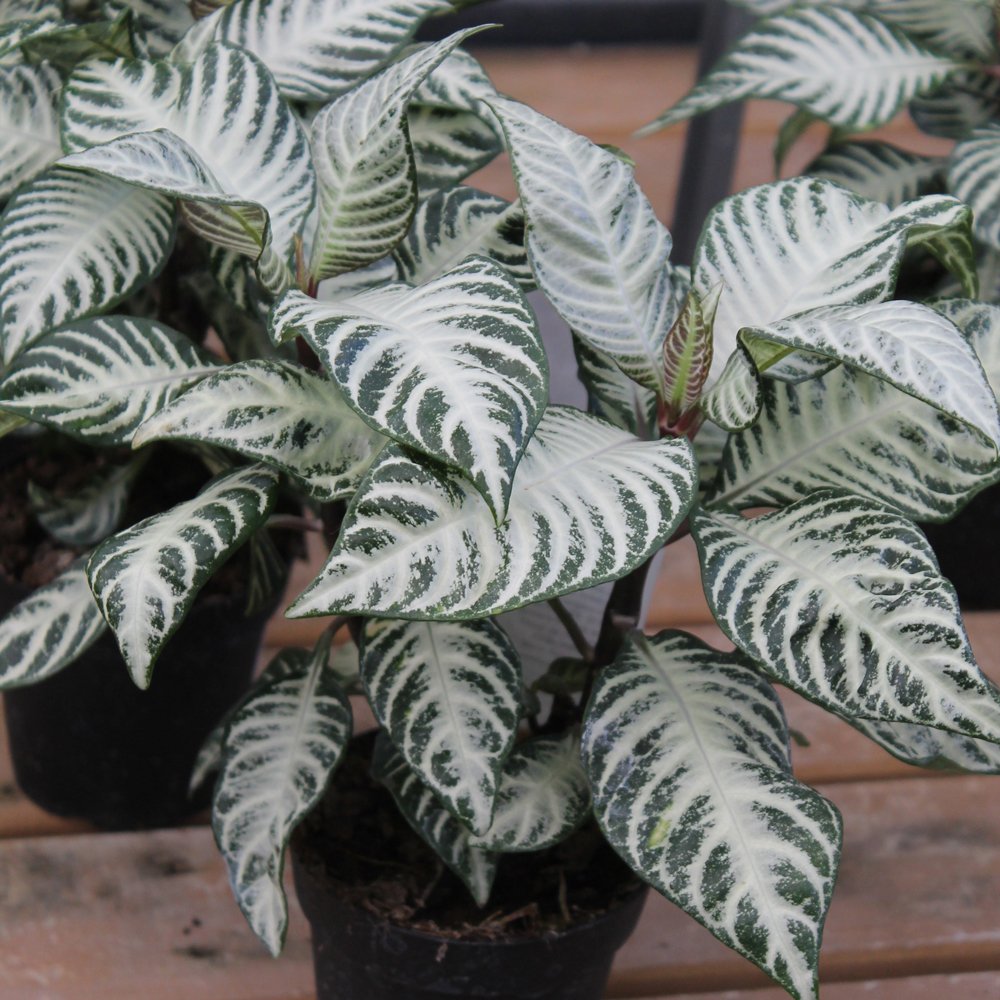
‘Snow White’ has darker green leaves with white veins and small white spots on the leaves resembling snow. The flowers of this type are either yellow or gold.”
Propagating a Zebra Plant
To propagate a zebra plant, take stem cuttings in spring from the side shoots of the parent plant using a sharp and disinfected cutting tool. To increase the chances of success, dust the cut ends in a rooting hormone and plant the stems in a pot filled with moist soil. To maintain a temperature of 70 degrees, put the container on a heating mat if necessary.
Since the branches need high humidity to develop strong roots, consider growing them in a covered terrarium or placing plastic wrap over the pot. The roots usually develop in about a month. New leaves will appear on the plant’s surface, indicating growth below the soil line. Once the propagated zebra plant grows roots, repot it into a unique pot.
Potting and Repotting Zebra Plant
Zebra plants do not require frequent repotting, and they benefit from a new pot only once every two to three years. If the soil has become low, remove the top inch or two of the soil and add a fresh mixture to provide the plant with additional nutrients.
Common Pests
Despite its uniqueness, the zebra plant is not exempt from attracting common pests like aphids, mealybugs, mites, scales, and thrips. Insecticidal soap or particular remedies for each type of insect can be used to eradicate pests.
Common Issues with Zebra Plant
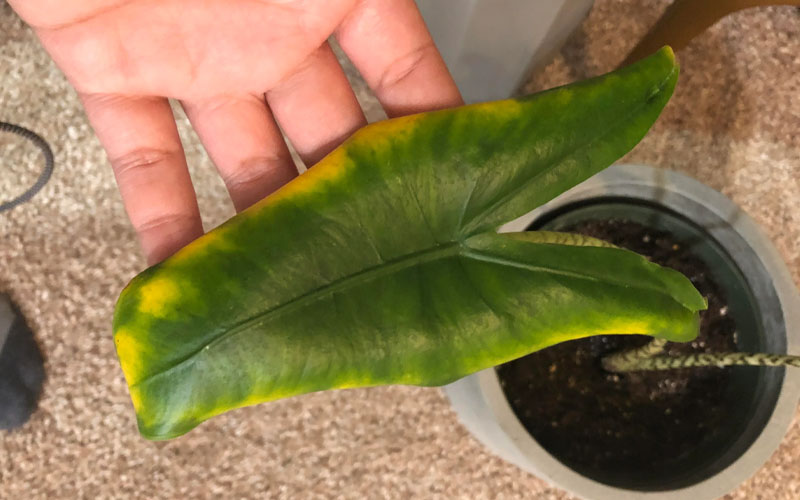
This plant, which is both sensitive and beautiful, may face some leaf-related issues. Watch out for leaf problems and give your zebra plant the necessary care and attention.
Leaf Drop
If leaves fall off the plant, it may be due to overwatering or underwatering, causing the tips of leaves on the lower portion of the plant to wilt. If the watering issue persists, the leaves will eventually drop. In addition, dry air around the plant could also be the cause, possibly requiring more humidity.
Leaf Curling
If the leaves curl or crinkle, the plant may receive too much bright sun or feel overheated. Although it enjoys light, it may be too intense or hot, so relocate the plant to an area with light but less direct or intense exposure to cool it down.
Browning Tips
Brown leaf tips usually occur for one of two reasons: excessive light or fertilizer. You can move the plant to an area with less direct sunlight or reduce fertilizing.
How to Induce Blooming in Aphelandra Zebra Plant?
To make your Aphelandra zebra plant bloom, following the plant’s natural growth pattern is important. Look for a plant with new bracts forming if you plan to buy one. The plant goes into semi-dormancy during early winter, and growth slows down. This plant likes cooler temperatures, so it’s okay if the temperature is lower than normal during this time.
Watering should be done less frequently, but the soil should only dry out partially. New growth will appear by late winter, and a weak fertilizer solution should be used to water the plant every two weeks. When side shoots and new flower buds emerge, generously place the plant in a spot with the brightest possible light and water.
Blooming occurs in summer, and the bracts provide the colours of yellow, orange, or red. Although the flowers die within a few days, the bracts can stay for months. After the bracts start dying, remove them and cut the plant back to allow for new growth. Aphelandra squarrosa is an attractive houseplant that rewards you with beautiful foliage and bracts if you take care of it.
But There’s Another Plant Called Zebra Plant!
“Surprisingly, there is another plant called zebra plant – the Calathea zebrina, which is a type of calathea plant. However, this plant is different from Aphelandra squarrosa, which is commonly known as the zebra plant. The Calathea zebrina has wider lines on lighter-coloured leaves and does not produce flowers. Despite this, some clothes are still called zebra plants. Additionally, two South African succulents, Haworthiopsis fasciata and Haworthiopsis attenuata, resemble aloe in their growth pattern and are occasionally referred to as zebra plants.
Challenges in Growing Zebra Plants
Zebra plants can experience curling or crinkling leaves if exposed to too much direct sunlight. To prevent this, relocate your plant to a less sunny spot.
If the potting mix is too dry, tip wilt may occur. This happens when you lightly water the plant, leaving the pot’s centre dry. Water the plant heavily at least once a month to avoid tip wilt and ensure that the soil is consistently moist.
Leaf wilt and drop can be caused by factors such as overly wet or dry soil, over-fertilization, and dying flower bracts. To address this, regularly examine your zebra plant’s soil and keep it moist but not too wet or dry. If your fertilization technique is too strong, dilute it more. And always remove dead flower bracts promptly.
Conclusion
In conclusion, the zebra plant is a stunning houseplant that can add a touch of exotic beauty to any home. While it can be a bit finicky to care for, with proper attention and a few simple tips, it can thrive and reward its caretaker with striking foliage and occasional blooms. Whether you’re an experienced plant parent or just starting out, the zebra plant is a unique and rewarding addition to any indoor garden.
Some Frequent Questions
Can zebra plants be easily cared for?
Due to its need for warmth, moisture, and nutrients, the zebra plant can be challenging to grow indoors, particularly in cooler areas. The plant may not thrive in natural indoor conditions.
What is the growth rate of zebra plants?
The zebra plant is slow-growing, taking up to three years to reach a height of a few feet. Repotting is rarely necessary.
What is the typical lifespan of zebra plants?
A zebra houseplant can survive up to ten years if given proper care and attention.
What distinguishes Aphelandra squarrosa from Calathea zebrina?
Both plants are known as the zebra plant, but they are unrelated. The Calathea zebrina has lighter leaves and does not bloom like the Aphelandra squarrosa.
Is zebra plant good for home?
Yes, the zebra plant is a good choice for a houseplant due to its unique striped leaves and ability to add a tropical touch to indoor spaces.
How do you take care of a zebra plant?
To take care of a zebra plant, providing it with bright, indirect light, high humidity, and moist but well-draining soil is important. It’s also recommended to fertilize the plant every few weeks during the growing season and avoid placing it in drafty areas.
Are zebra plants hard to care for?
Zebra plants can be challenging due to their specific light, humidity, and watering requirements. They need a warm, humid environment and consistent moisture to thrive.
Do zebra plants need a lot of light?
Yes, zebra plants need bright, indirect light to grow well. They can be placed in a north-facing window or a few feet away from a sunny window to receive the right amount of light without too much direct sun.
Do zebra plants clean the air?
Yes, like many plants, zebra plants are known to help purify the air by removing pollutants such as formaldehyde and benzene.
Do zebra plants like a lot of water?
Zebra plants like consistently moist soil but not to the point of being waterlogged. It’s recommended to water them when the top inch of soil feels dry to the touch and to avoid letting the soil completely dry out or become soggy.
Related Articles
- Carnation Flower: Plant Care and Growing Guide
- How to Grow and Care for the Cast Iron Plant?
- Spider Lily: A Guide to Growing and Caring for this Stunning Flower
- How to Grow and Care for Pussy Willows
- Zebra Plant Care: Growing Aphelandra Squarrosa At Home
- 8 Prosperous Types of Money Plants in Feng Shui to Bring Wealth and Abundance
- A Comprehensive Guide on Growing and Caring for Majesty Palm
- How to Grow and Care for Baby’s Breath?
- Rhododendron Plant: Rhododendron Care In Your Garden
- Iris Flower – All You Want To Know About Them

